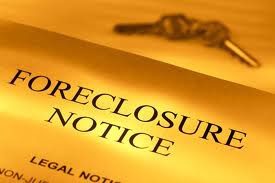Many states with faster foreclosure processes are seeing sharper increases in home prices.
There are exceptions. And other factors, such as job growth, are likely stronger drivers of home price trends, economists say.
But home price data generally show stronger price increases in states where courts don’t have to approve foreclosures than in states where they do. Foreclosures are completed faster where court approval isn’t necessary.
Last year, home values tracked by Zillow, a Web-based real estate tracker, rose an average 5.4 percent in the 24 states where foreclosures don’t go through the courts, according to Zillow. Where they do, the average increase was 3.2 percent.
Asking prices follow trend
Asking prices, a leading indicator of price trends, show a similar pattern.
In January, asking prices in non-judicial states were up an average of 7.3 percent year-over-year versus 3.1 percent for judicial foreclosure states, show data from real estate website Trulia.
Nonjudicial foreclosure states have tended to clear out distressed home inventory quicker, which is helping prices, said John Burns, CEO of John Burns Real Estate Consulting. The 10 major metropolitan areas that have seen the most rapid appreciation in home prices in the past year are in non-judicial foreclosure states, the firm says.
Job growth and how far prices dropped during the housing bust are probably stronger drivers of home price trends, said Trulia economist Jed Kolko. But foreclosure speeds are a contributor, he and others say.
Court states vs. noncourt states
In Florida, New York and New Jersey — all judicial foreclosure states — the average loan in foreclosure was past due for more than 31 months before the process was completed, according to December data from Lender Processing Services.
In California, Arizona and Nevada — all nonjudicial foreclosure states — that average was fewer than 22 months, LPS data show.
Those three states were among the top seven in terms of home value gains last year, Zillow’s data show.
Homes lingering in foreclosure “creates real uncertainty,” which hurts prices, and inhibits investor buyers, says Stan Humphries, Zillow’s chief economist.
A few exceptions
Exceptions to the trends in price gains between judicial and non-judicial foreclosure states underscore that many factors influence home values, Kolko says.
For instance, Zillow’s data show strong price gains last year in Indiana, a judicial state. Rhode Island had the greatest price depreciation last year, the data show, and it’s a nonjudicial state.

